THE FIRST TIME I HEARD THE term “caviar farmer” I thought it was a little piece of ironic humor, as professions often have about themselves. Rod Browne Mitchell, founder of Browne Trading Company in Portland, Maine, set me straight: “There’s no more wild harvest. There’s no more Russian caviar, there’s no more Iranian caviar, there’s no more Azerbaijani caviar—there’s no more wild caviar that comes from any other countries that we’re allowed to import. Everything is farm-raised, because of the Endangered Species Act and CITES, the Convention for Trade in Endangered Species.”
I met Mitchell, who turned the family profession of fishing into being a major international importer and distributor of seafood, at a caviar tasting event for chefs held at III Forks, the Streeterville steakhouse. Christmas and New Year’s are the big season for caviar, and Carl Galvan of Villa Park-based Supreme Lobster, which markets Browne products to restaurants in the upper midwest and Las Vegas, had invited a couple of dozen chefs to try three caviar products they carry, to nudge ordering for the holiday season.

Farmer Leo Ray and Rod Mitchell of Browne Trading Co.
Aquaculture projects to raise sturgeon (for both meat and caviar) are under way in most of Europe and many other countries around the globe. There are subtle differences between the product and even the precise species between these locations (the American is Acipenser transmontanus, but others are A. gueldenstaedti, the classic Russian sturgeon) and this is a luxury market like wine, so marketing is all about those subtle differences. Mitchell introduced me to one of the farmers, who raises sturgeon in the famous caviar region of… Idaho?
“I’ve been raising fish since 1961,” said Leo Ray, a lean, Lincolnesque westerner with a gentle country voice. “Catfish, trout, tilapia, and sturgeon. We started growing [sturgeon] in 1988, experimentally at first.” His farm consists of concrete channels in the Snake River Canyon, made famous to non-Idahoans when Evel Knievel tried jumping it in 1974. “The Snake River Canyon has the largest concentration of spring water anywhere in the world. We use the water for raising fish, and then we use it for irrigation and power plants and everything down below. You can’t find better water quality than what we have. A fish is like a sponge, it tastes like the water it’s in. We start with good water and end up with good caviar.”

Chefs learning about Idaho caviar
The downside of becoming a caviar farmer is that American sturgeon, living in such cold water, take a long time to reach maturity; Ray said he had to sell sturgeon for meat for a decade before he ever produced caviar to keep up the cash flow.
“So the caviar is more lucrative at this point?” I asked.
“Uh, that’s still to be determined,” he chuckled. “It takes you ten years to get to the point of producing caviar, and another ten years to stabilize that. We’re learning. Every year we reduce costs and increase production, with what we’re learning.” One result is that the population of Idaho sturgeon is up considerably since he started. The easiest thing when he started would have been to import California sturgeon, but wildlife authorities wanted only Idaho sturgeon in Idaho waters. So a university established a breeding program, and Ray got to borrow a certain number of them and breed them, with the requirement only that he return as many as he borrowed in the first place.
“I have more fun raising sturgeon than any of the other fish,” Ray said. “They have more personality. In the river system, they’re the largest fish out there, and they’re not afraid of anything. You get in a raceway with them and they come over and introduce themselves to you. They’re a good 401k plan, because it’s ten years before you can harvest the first one.”
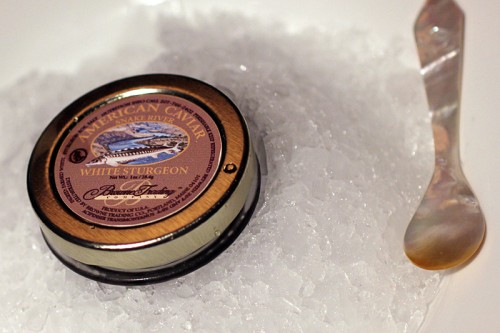
THE WHOLESALE SWITCH TO FARM raised caviar has changed the world of caviar—mostly to the better, said Mitchell. “The old Russian caviars were very inconsistent, because you could never tell how far along the eggs were in development when the fish was harvested,” he said. “So you got some caviar that was mushy, some that was too oily, and some that was perfect. And there was a tremendous amount of black market activity, so you never knew what temperature it was kept at. Now, with caviar aquaculture, you have consistency. You’re more apt to get perfect caviar. They also harvested only twice—once in the spring and once in the fall—and nobody ever got the fall product because it came in in November. So you always had older caviar that was more developed, more briny.
“I have more fun raising sturgeon than any of the other fish. They have more personality.”
“Now the product is more managed, it’s more consistent, and it’s produced continuously. Everything you’re going to taste today is less than two months old. Leo’s is, when did you produce this, last week?”
“Probably two weeks old,” Ray said.
“Does it need some time, or can you eat it the same day it’s cured?” I asked.
“Some people like one day caviar,” Mitchell said.
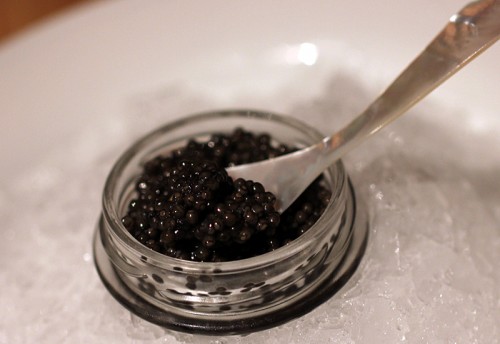
Idaho caviar
The restaurant brought each of us a small jar of caviar, in a bowl full of ice. Ray had boasted of his caviar’s consistent large size, but large is still pinhead-small for sturgeon roe. Mitchell had said caviar was graded on “the three T’s—texture, tone or color, and taste.” But he offered me one easier test I could perform myself: press it against the roof of your mouth and feel the eggs pop. Better caviar would give a sensation of more distinct eggs and a clearer pop. Ray’s was distinct, and not too salty, but I didn’t really feel that I had enough sense of the differences yet to judge.
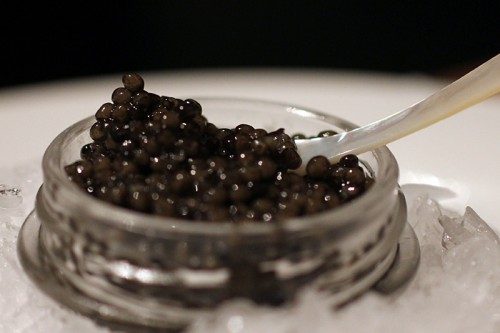
Israeli caviar
The second caviar, served the same way, was Israeli, labeled as Galilee Osetra, Osetra being in the old system for Russian caviar the second highest grade—and the eggs were, indeed, ever so slightly larger. It had something the Idaho caviar did not—a creaminess, a little butter-like sensation on the tongue, that nevertheless didn’t prevent the caviar from seeming distinct as I pressed it against the roof of my mouth.
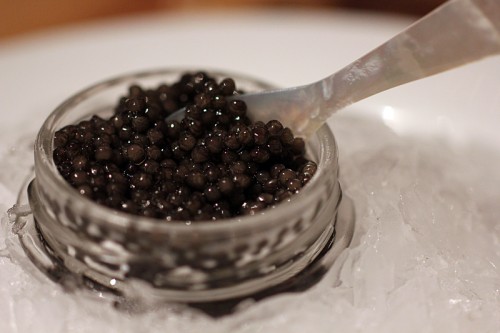
Belgian caviar
The third was from Belgium, and the description of the operation behind it bordered on Bond-villainish—it’s a proprietary half-breed (A. gueldenstaedti crossed with A. baerii, the Siberian sturgeon), raised by caviar expert Dr. Willy Verdonck at a high-tech indoor farm facility to which Mitchell had to be driven in secret (to evade the attention of Russian Mafiya caviar gangs, one assumes). Browner rather than black like the others, this was also creamy, and the saltiest of the three, but if I liked it a little less than the Israeli eaten straight off my mother of pearl spoon, I could certainly see applications where that more aggressive saltiness could be useful—not least because Jake Bickelhaupt of 42 Grams had sat down at my table after the presentation started, and was free-associating which he might use for what (he already buys the Israeli one, he said).
Later, I asked one of the chefs who’d been there, Ashlee Aubin of Salero and Wood, what his impressions were. “I thought the caviar tasting was a real eye opener,” he said. “It’s really rare that anyone has the chance to eat that much caviar, especially by itself with no accompaniments. You taste nuances in the volume that don’t come through on a small taste.” He was especially interested in the Idaho caviar—”Most domestic that I’ve tried has been really subpar. The texture, low salinity, nutty tones were really nice. We are thinking about using it at Salero—there is a big tradition in classic high end restaurants in Spain to do mostly French food, so there are a lot of things to draw on.”
At the end of the tasting Galvan made a pitch for placing holiday orders early—which meant I got to see a wholesale price list. The pricing was pretty uniform for the tiny jars we had been eating from—$56 for 30 grams of the Israeli and Belgian, $53 for an ounce of the Idaho caviar. But there were good discounts to be had if you ordered a kilo or more (think a can the size of a wheel of Gouda cheese), Galvan assured the chefs. For my part, I’ll just say that my tiny jars were very good on scrambled eggs and fingerling potatoes the next day.
It was both an education in caviar and a reminder of how many specialties in the world of food there are to know about. At one point, Leo Ray said to me, “We know less about sturgeon than almost any animal. I have a young lady working for me on her master’s in dairy science. She passed up a fantastic opportunity in dairy to work with me, and the reason why, she said, is that in dairy science we know so much that it’s very minute discoveries, changes that you make. With sturgeon, everything we do is new. And it makes a lot more challenging and a lot more fun.”
Michael Gebert is the beluga of editors at Fooditor.
Latest
Join the Discussion
After you comment, click Post. If you're not already logged in you will be asked to log in or register with Disqus.




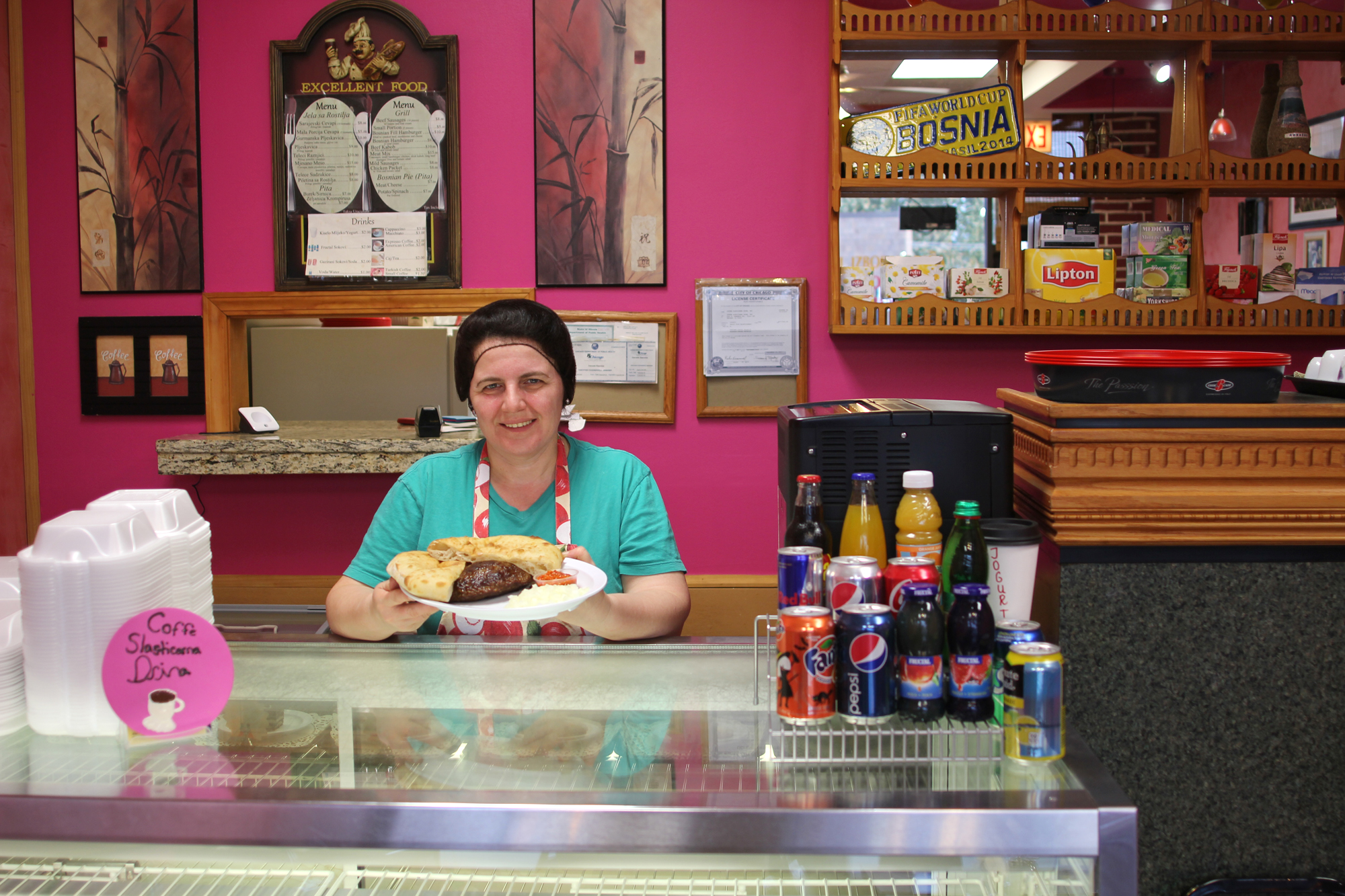

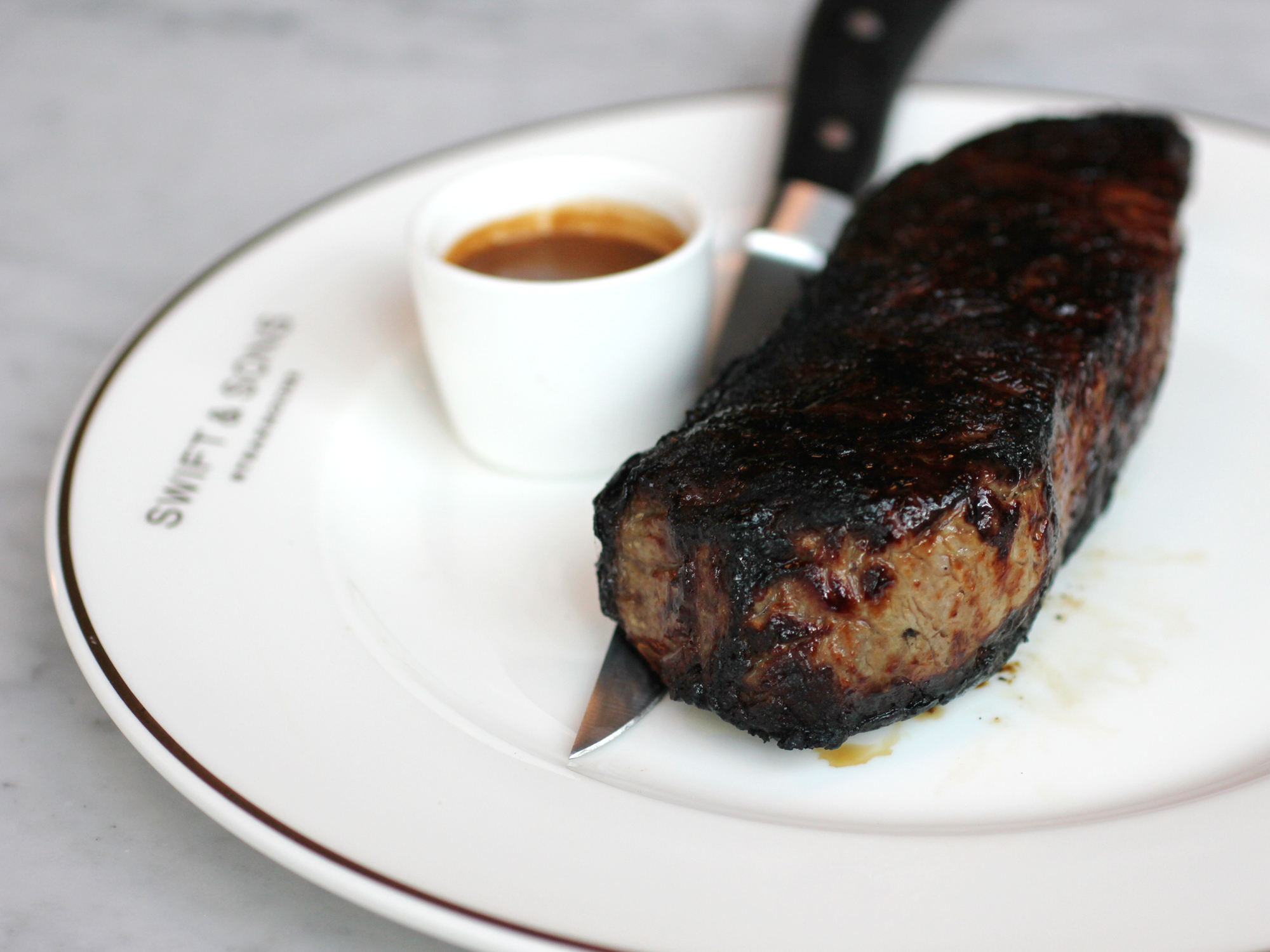
Great story! I tried Chinese caviar in Hong Kong that was really quite good.